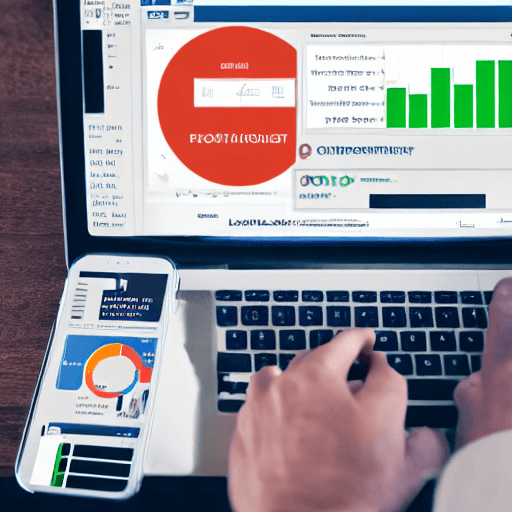

In today’s competitive digital landscape, reaching the right audience with your advertising messages is paramount. Traditional Meta Ad targeting relies heavily on demographic and interest-based data, but this approach often leads to wasted ad spend and low conversion rates. A more sophisticated and effective strategy involves integrating your Customer Relationship Management (CRM) data directly into your Meta Ad campaigns. This allows you to build incredibly precise Custom and Lookalike Audiences, dramatically improving your targeting accuracy and ultimately, your return on investment. This comprehensive guide will delve into the process, providing practical examples and detailed explanations to help you unlock the full potential of your CRM data within Meta Ad Management.
For years, marketers have struggled with the ‘spray and pray’ approach to advertising. Simply targeting broad interest groups or relying on basic demographic data often results in reaching individuals who aren’t genuinely interested in your product or service. This leads to low click-through rates, poor engagement, and a significant drain on your advertising budget. The shift towards data-driven marketing has revolutionized this approach. Now, businesses can leverage the wealth of information they collect about their customers – data that reveals their behaviors, preferences, and purchase history – to create highly targeted advertising campaigns. Meta’s advertising platform, with its robust audience targeting capabilities, provides the perfect environment for this strategy. By connecting your CRM to Meta, you gain access to a level of precision that was previously unattainable.
Custom Audiences are one of Meta’s most powerful targeting tools. They allow you to upload your existing customer data – typically from your CRM – to create a list of individuals who have interacted with your business. There are several ways to build Custom Audiences, each with its own strengths:
The beauty of Custom Audiences is that they’re incredibly granular. You can target people based on their specific behaviors and interactions, allowing you to deliver highly relevant advertising messages. Let’s consider an example: a local coffee shop wants to promote a new seasonal latte. They could create a Custom Audience of people who have visited their website in the past month, viewed their menu, and added the new latte to their cart – even if they didn’t complete the purchase. This demonstrates a high level of intent and significantly increases the likelihood of a conversion.
Lookalike Audiences take data-driven targeting to the next level. Instead of targeting existing customers, you use your Custom Audience data to identify new individuals who share similar characteristics and behaviors. Meta’s algorithm analyzes your Custom Audience and finds other people who match those patterns. This is a powerful way to expand your reach and find potential customers who are likely to be interested in your product or service.
Think of it this way: you’ve identified a group of people who are already buying running shoes from your website. A Lookalike Audience will then identify other people who share similar demographics, interests, and online behaviors – perhaps people who also frequent running blogs, participate in online running communities, or have purchased athletic apparel. The algorithm doesn’t just look for demographic matches; it analyzes behavioral patterns to find the closest possible matches.
Meta offers different Lookalike Audience sizes, allowing you to tailor the size of your audience to your budget and goals. A smaller Lookalike Audience (e.g., 1-2% of your Custom Audience) will be more targeted and potentially more expensive, while a larger audience (e.g., 3-7%) will be more cost-effective but may include some less-qualified leads. It’s crucial to experiment with different Lookalike Audience sizes to determine what works best for your business.
The process of integrating your CRM data with Meta Ads involves several key steps:
Consider using a Customer Data Platform (CDP). A CDP is a technology that unifies customer data from various sources – including your CRM, website, and marketing automation platform – into a single, comprehensive view. This makes it easier to create and manage your Custom and Lookalike Audiences.
To maximize the effectiveness of your CRM data targeting, consider the following best practices:
It’s crucial to track the performance of your CRM data targeting campaigns to determine their effectiveness. Key metrics to monitor include:
By tracking these metrics, you can identify what’s working and what’s not, and make adjustments to your campaigns accordingly.
Integrating your CRM data with Meta Ads is a powerful way to improve your advertising targeting and drive better results. By leveraging the insights from your customer data, you can deliver more relevant messages, reach the right people, and ultimately, increase your return on investment. Remember to prioritize data quality, continuously test and optimize your campaigns, and always respect user privacy.
This detailed guide provides a comprehensive overview of CRM data targeting with Meta Ads. By implementing these strategies, you can unlock the full potential of your customer data and achieve your advertising goals.
Tags: CRM data, Meta Ads, Custom Audiences, Lookalike Audiences, Meta Ad Management, Targeting, Advertising ROI, Customer Data Platform, CDP, Audience Segmentation
[…] function is to track user behavior on your site – everything from page views to purchases. This data is then used to build incredibly targeted audiences, allowing you to show your ads to people who are most likely to be interested in your […]
[…] Targeting Precision: With detailed customer data, you can create highly specific audience segments based on their interests, behaviors, and purchase […]
[…] based on offline interactions, such as store visits or phone calls. This requires integrating your CRM or phone system with Meta. A local restaurant could target people who have dined at their restaurant in the past, encouraging […]
[…] Creation: Within your CDP, you define the audience segments you want to target in Meta […]
[…] Audiences: Expand your reach by creating lookalike audiences based on your Customer Match audience. Google will identify users who share similar […]